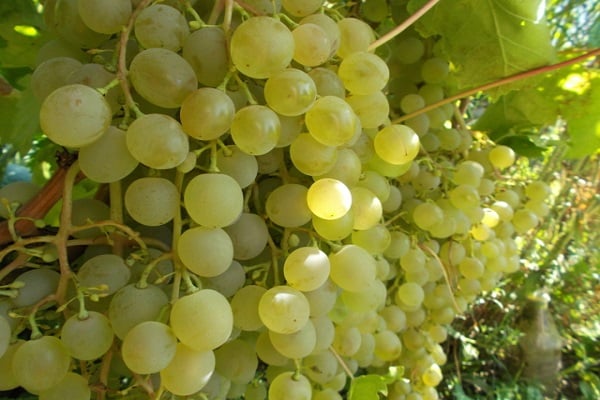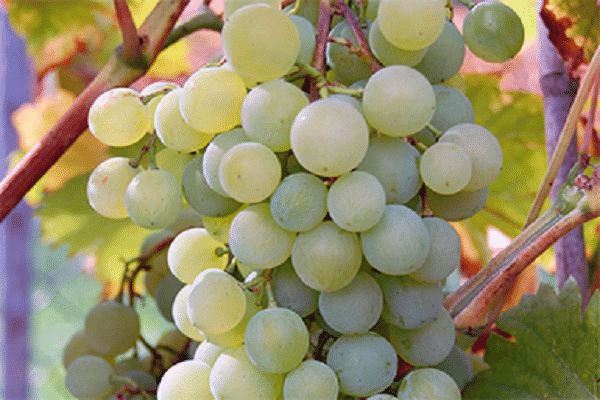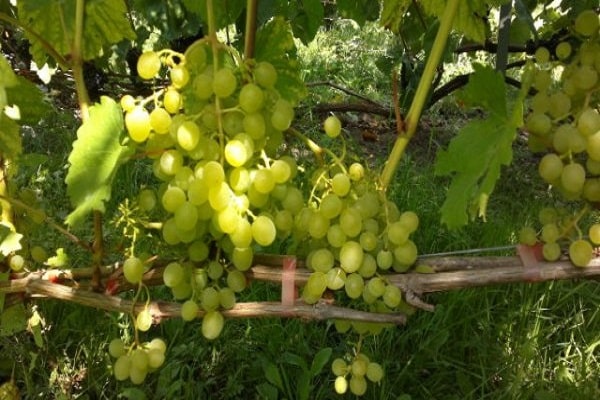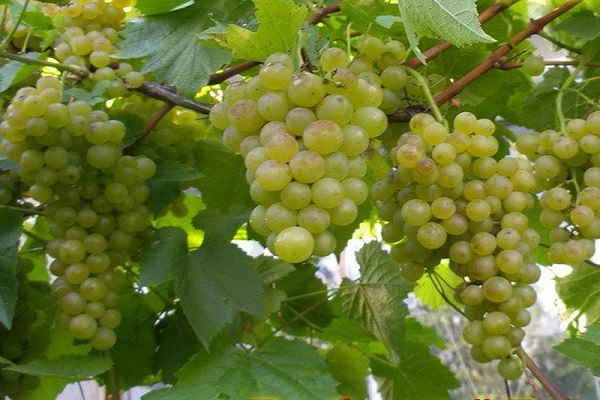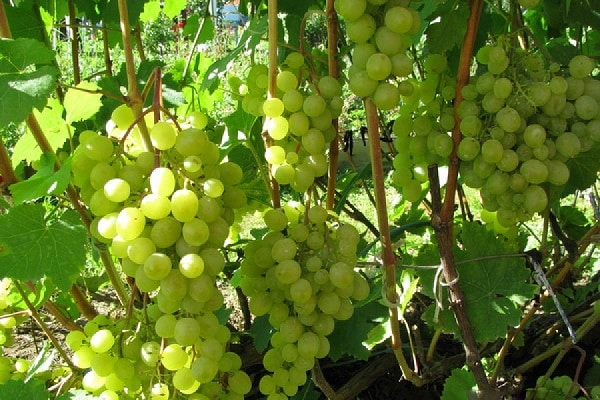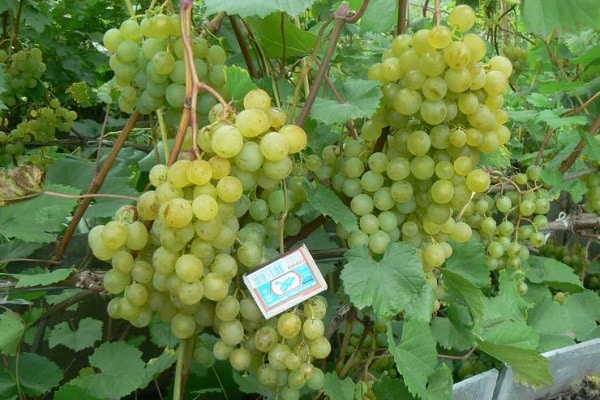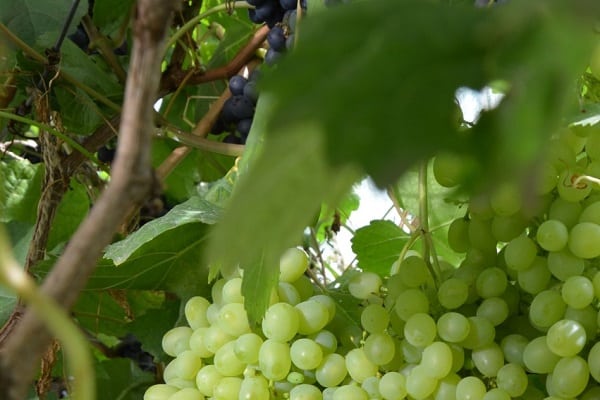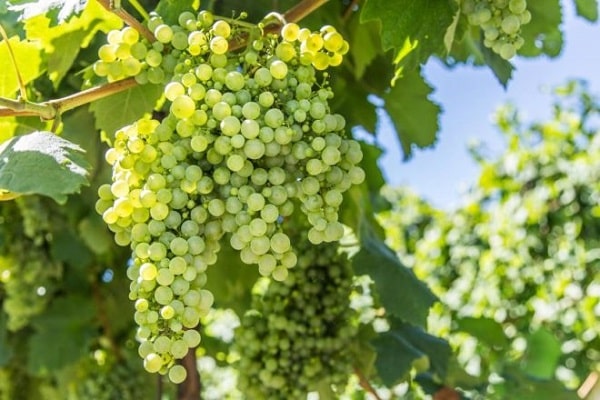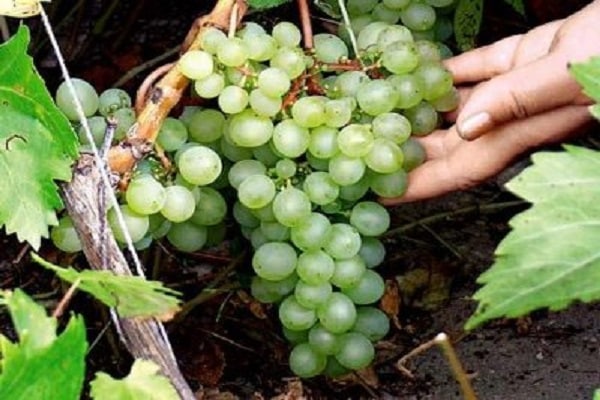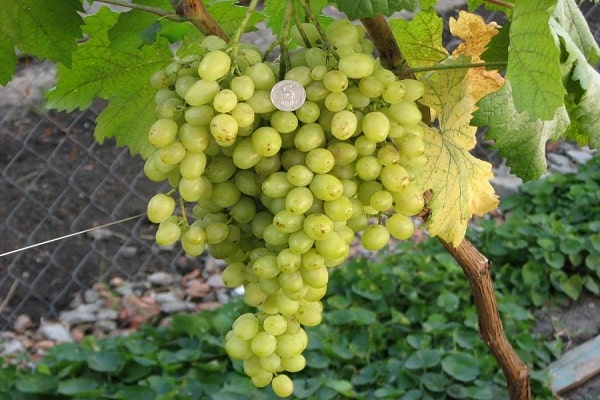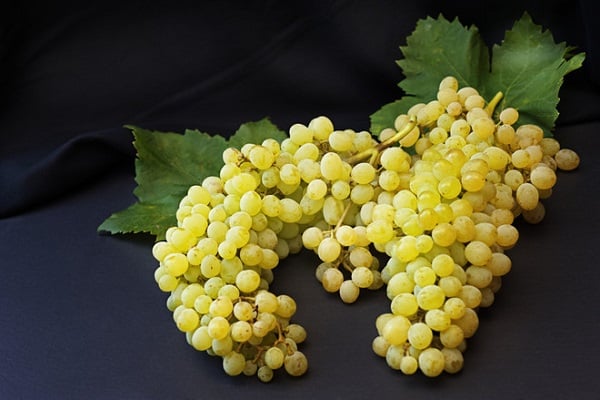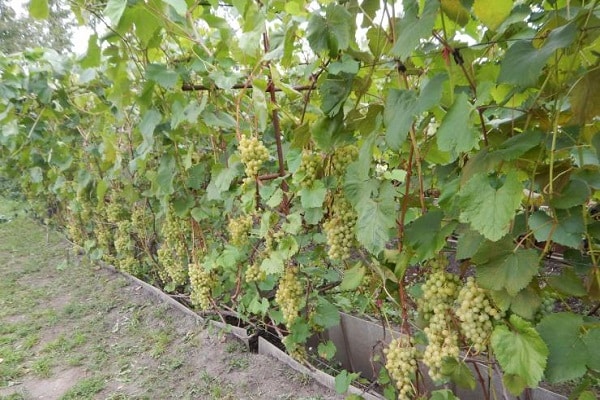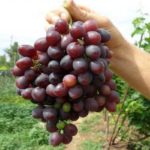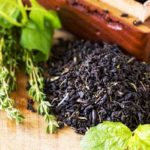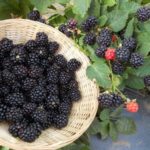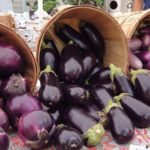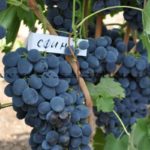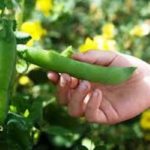There are varieties of grapes, from the name of which it immediately becomes clear what the advantage of a garden crop is. If you want to get tasty and beautiful bunches, with a minimum of effort, you should pay attention to the Krasa Severa grape variety. In ordinary life, many gardeners call it Princess Olga. For successful cultivation, you need to know in advance about the features of caring for the plant.
- Description of Krasa Severa grapes
- History of selection
- Bush structure
- Pros and cons of the variety
- Characteristics of Princess Olga
- Frost resistance
- Pest resistance
- Possible diseases
- Properties of berries
- Tasting qualities
- Vitamin content
- Therapeutic effect
- Planting seedlings
- Selection of seedlings
- Site selection
- Digging a hole
- We are disembarking
- What to do and why
- Growing and care
- Pruning and shaping the bush
- Root care
- Trellis and garter
- Watering
- Fertilizer
- Treatment against diseases and pests
- Preparing the bushes for winter: mulching and covering
- Harvest
- Collection
- Transportation
Description of Krasa Severa grapes
The variety of grape varieties on the horticultural crops market increases every year. In the southern regions of Russia, old crops are being replaced by new ones that have better breeding qualities. At the same time, in the northern regions the situation is the opposite, and there is no alternative to varieties like Krasa Severa, which is why they still remain popular.
History of selection
In Russia, the grape variety has been successfully cultivated for more than 50 years. Culture owes its appearance to the scientists of the Research Institute Michurin I.V., the date of his birth is considered to be 1960. Over the course of several decades, the plant has become widespread and, thanks to its unique breeding qualities, is now actively grown in the southern and northern regions of the country.
Bush structure
The Krasa Severa grape bush is covered with three-lobed leaves. In the upper part they are dissected, on the lower side there is slight pollination. The variety is considered high-yielding, and one shoot produces 1.2 inflorescences. During the season, the bush is characterized by rapid growth, which can reach 95%. Over the course of a year, the plant can reach a height of 3 m.
Pros and cons of the variety
Krasa Severa grapes combine excellent taste and external qualities. The variety is unpretentious in care and does not require special attention. The advantages of the variety include:
- unpretentiousness;
- bisexuality of flowers;
- decent taste;
- low temperature tolerance;
- versatility of use;
- crop stability.
A long period of growing grape varieties in the conditions of Russian regions has confirmed in practice the advantages of the plant’s breeding characteristics.
Characteristics of Princess Olga
The description classifies the grape variety as a white table grape. The berries are used fresh for making juices; it can be used in winemaking. The plant is an early ripening and frost-resistant species.
Frost resistance
The garden crop is a frost-resistant variety. Grapes of the Krasa Severa variety are able to tolerate low temperatures and drops to -26 0C.
Pest resistance
Aphids, mites, and thrips are considered dangerous pests for grapes. To combat these types of pests, mechanical and chemical methods are used. Wasps and bees love to eat berries. To save fruits from them, gardeners often have to use mesh shelters.
Possible diseases
Krasa Severa grapes do not have high resistance to grape diseases. The plant is susceptible to mildew and oidium. The degree of resistance to them in the plant is estimated at 3.5 points. At the same time, the crop is not afraid of gray rot; even with high humidity, the bunches can remain on the bush for a long time without losing the quality of the fruit.
Properties of berries
The grape berries are greenish in color, and a slight pink tan can be observed on the surface of the skin. There is a thin waxy coating on it. The fruits are round in shape, have a sweet taste and leave a pleasant feeling of freshness after consumption. The size of one grape can reach 2 cm. The seeds are small, their number can be from 2 to 4.
The berries are collected in clusters weighing 250-380 g.The pulp contains 5.4 g/l acid, the sugar content varies from 14 to 17%. Thanks to these indicators, you don’t have to add sugar when making juice.
Tasting qualities
The tasting quality of the fruit was rated 8.4 points.
Vitamin content
The berries of the Krasa Severa variety contain a large amount of folic acid, which is especially useful for women in the first trimester of pregnancy. The fruit contains vitamin A, a wide variety of groups B, C, PP and E. Among the wide variety of microelements you can find phosphorus, magnesium and calcium, which are important for the body. The pulp contains an impressive list of microelements, including iron, fluorine, and manganese.
Therapeutic effect
It is useful to consume not only grapes, but also juice. Due to the high content of useful substances, they use a natural remedy to compensate for the deficiency of vitamins and essential elements. Berries help with asthma, migraines, and chronic fatigue. They are used to prevent heart pathologies and reduce the risk of blood clots.
Grapes have always been famous for their properties to slow down the aging process, improve the condition of the skin and hair, so the fruits are widely used in the field of cosmetology.
Planting seedlings
To get a decent harvest, it is important to choose a healthy, high-quality seedling. A guarantee of obtaining the desired variety of crops is to contact specialized nurseries or purchase from trusted sellers.
Selection of seedlings
The seedling should not have obvious signs of damage or defects. It is necessary to pay attention to the root system of the young plant. The shoots should be “alive”; dryness and rotting should not be observed.The color of the surface of the roots should be whitish; darkening of the areas means the presence of problems and indicates the beginning of the development of putrefactive processes.
Site selection
For planting, it is necessary to provide a sunny place, protected from the effects of gusts of wind. The soil should be sandy loam or sandy. The plant has a powerful root system, so areas with water running close to the surface are not suitable for planting grapes. Gardeners often plant crops next to building structures, in which case a 1.5 m distance from the foundation is required.
Digging a hole
Soil for planting grapes prepare in advance, digging it up 2 weeks before planting so that the soil has time to settle. The depth of the hole must be at least 80 cm, diameter 60 cm. If there is turf, it must be removed, and the layer can be used when planting. To do this, it is placed at the bottom of the hole, with the surface with the grass facing down; after rotting, it will turn into fertilizer.
We are disembarking
Before planting, the roots of the grape seedling are placed in a nutrient solution using a growth stimulator. The drug is prepared according to the instructions supplied by the manufacturer. If damaged processes are identified, they are removed.
What to do and why
When growing grapes on heavy soils, 30 mm thick drainage must be provided at the bottom of the hole. For this purpose, use fine gravel or crushed stone. Sandy soils do not need drainage, but to better retain water at the bottom, they form a “castle” of clay, laying the material in a layer of 20 cm. Next, phosphorus-mineral fertilizers are added to the soil, which will provide the plant with a sufficient amount of nutrition.
Before planting, you need to carefully straighten the roots of the seedling, achieving their uniform distribution.The pit space is filled with fertile soil, adding organic matter to the soil in the form of humus or rotted manure. After planting, provide the shoot with abundant watering, giving the plant 20 liters of water. When planting, adhere to the scheme, maintaining a distance of 1.5-2.5 m between neighboring bushes.
Growing and care
The plant is undemanding in care. Mandatory work includes pruning, fertilizing, watering and loosening the soil. To prevent diseases, it is recommended not to neglect spraying with drugs against pests and infections.
Pruning and shaping the bush
It is recommended to form shoots using a fan method, in which 4 sleeves are left. In spring, pruning is required; it can be short or medium depending on the age of the grapes. For fruiting, leave from 6 to 8 eyes in young bushes, up to 10 in adults. When carrying out work to normalize the process of bunch formation, no more than 40 shoots are left.
Root care
The plant requires timely watering. Excessive waterlogging is detrimental to the plant, so allowing excess moisture is undesirable. To prevent crops from freezing in winter, control the absence of root shoots reaching the soil surface. If there is a similar problem, such areas are removed by cutting as close to the trunk as possible.
Trellis and garter
To grow, grapes need to be provided with support, which is achieved through trellises and tying up shoots. Trenches are dug on the sides and pillars are installed. 3 rows of wire are stretched between them, to which the shoots are tied.
Watering
The first abundant watering of grapes is carried out in the spring in order to stimulate the growth of the plant and speed up its “awakening”. During the growing season, additional moisture is provided as needed. In the autumn, the amount of irrigation is reduced, which reduces the plant's ability to grow and helps it prepare for winter.
Fertilizer
The first work is carried out in the spring after removing the cover, adding phosphorus-potassium fertilizers to each bush. Nitrogen-containing preparations can be used to stimulate plant growth. 1.5 weeks before the start of the flowering period, it is enriched with a solution of chicken manure, dissolved in water in a ratio of 1:2. During the period of berry ripening, soil enrichment with phosphorus-potassium fertilizers is repeated.
Treatment against diseases and pests
To prevent diseases of grapes with mildew and oidium, preventive spraying is carried out in the spring. To combat the former, Bordeaux mixture, copper sulfate or a chemical are used. The most popular remedies include Radomil and Acrobat. To protect against oidium, colloidal sulfur or the drug Topaz are used. The first spraying is done at the beginning of the season before the flowers bloom; repeated spraying is carried out if the first signs of disease are detected on the leaves.
Preparing the bushes for winter: mulching and covering
In the autumn, after the plant sheds its leaves, work begins on forming a shelter. To do this, the plant is removed from the trellis, the remaining dead parts are removed and the shoots are pressed to the ground. Dry leaves, branches or sprinkled with earth are placed on top of the grape vines. Some gardeners prefer to use covering material.
When providing protection from the cold, it is important not to overdo it, otherwise the plant will begin to rot, and the risk of its death increases significantly.
Harvest
The grape variety is considered high-yielding. The average fruit yield per bush is 12 kg. To obtain larger berries, you should control the number of grape clusters.
Collection
The period for collecting brushes depends on the area of growth. The grape variety is considered early, and the ripening period begins 110 days after flowering.
Transportation
The grape variety is in demand on the fruit market because it has excellent external characteristics and good keeping quality. It is not afraid of long-term transportation conditions and is able not to lose its properties for a long time.

